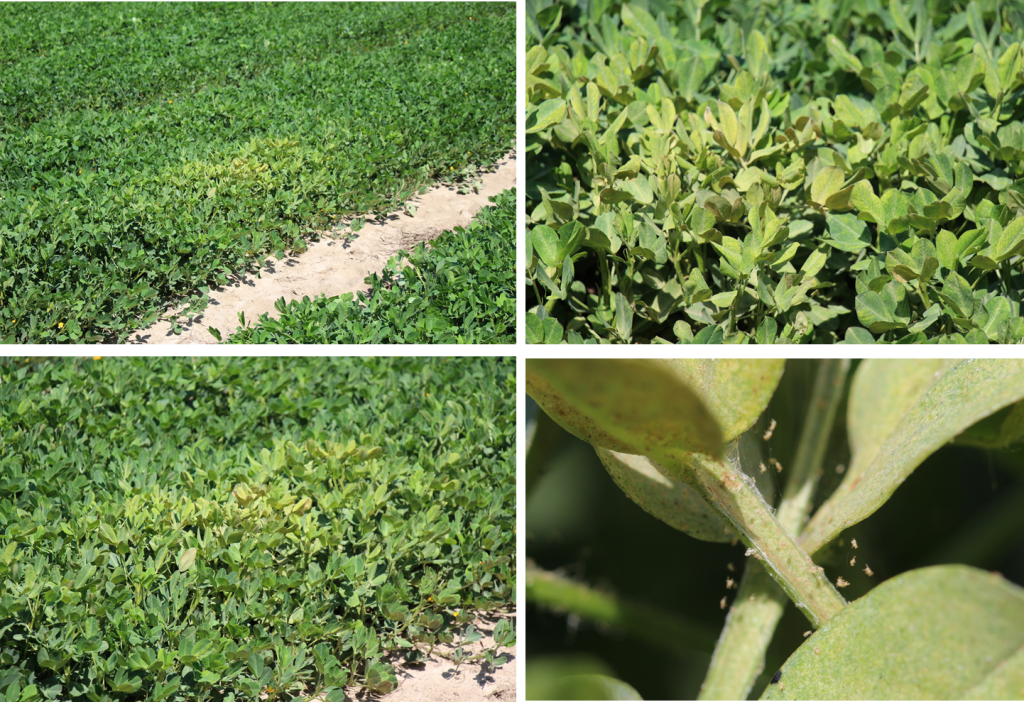Spider mites have been reported on a number of crops including vegetables and cotton since this spring, and as conditions continue to be hot and dry in many locations, we are beginning to see populations jump in peanut. The two spotted spider mite is a challenging pest to control. It thrives in hot, dry conditions where it completes development in as little as 7 days at 81ºF. Female mites can lay up to 100 eggs over several weeks, so it is easy to see how infestations can go from light to heavy in a very short period of time.
In the early stages of infestations mites will be found mostly on the undersides of leaves. Their position on the plant and the webbing they create make getting good contact with a miticide difficult. Once infestations progress, mites will be seen on lower and upper portions of the leaves. It is very common to see “hotspots” like the one pictured below in peanut fields when infestations are just getting started. Mites will radiate out from these areas to infest the rest of the field. Populations often get established along field borders and especially borders adjacent to dirt roads or field paths.
Georgia growers are strongly urged to scout fields for spider mites as early detection can improve the odds of effective control. The ovicidal activity of miticides labeled for use in peanut is limited, so more than one application may be needed to clean up infestations. Propargite (e.g. Comite) is currently the only real option for mite control in peanut. I do not recommend the use of a pyrethroid for two spotted spider mite in peanut.
Fields where granular chlorpyrifos (e.g. Lorsban) was applied for lesser cornstalk borers are at elevated risk for mite infestations. The use of other broad spectrum insecticides like acephate or a pyrethroid may also flare mite populations.
